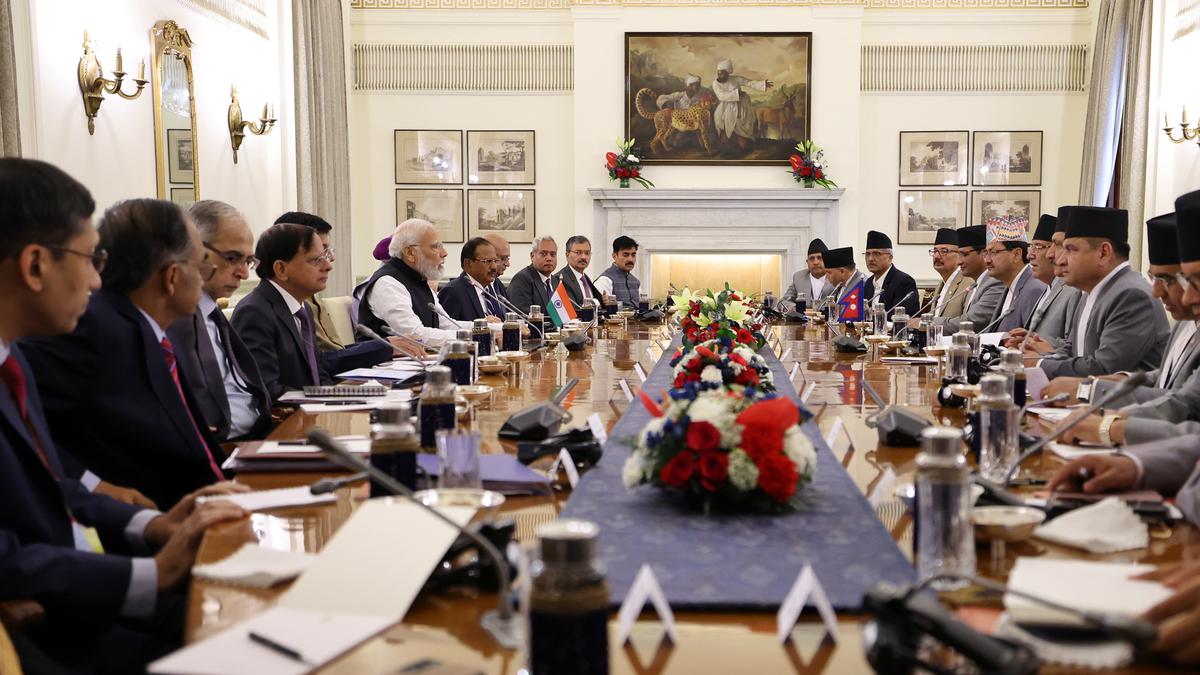
More HIT than miss in India-Nepal ties Premium
The Hindu
In the Prachanda visit, India and Nepal have demonstrated that the focus on Highways, Infoways, and Transways will go a long way in rebuilding bilateral trust
On his return to Kathmandu after concluding his four-day official visit to India, Nepal Prime Minister Pushpa Kamal Dahal ‘Prachanda’ described it as “successful”. He has reason to be satisfied. This is Prachanda’s third stint as Prime Minister and compared to his earlier official visits in 2008 and 2016, the visit in 2023 has delivered many more concrete outcomes. But what is more important is that many controversial issues were successfully skirted.
Under Prachanda’s leadership, the Maoist Centre had fought the elections last year in coalition with the Nepali Congress (NC). There was a falling out over claims to the post of Prime Minister, and Prachanda switched sides to team up with the K.P. Sharma Oli-led UML. Prachanda was sworn in as Prime Minister on December 26. However, the NC decided to support Prachanda in a vote of confidence, suggesting that since he had emerged as a consensus Prime Minister supported by 268 members in a 275-member House, he should also go for a national consensus apolitical President. Though Prachanda had earlier agreed to support UML candidates for the post of President (due for election in March) and Speaker (in return for making him Prime Minister), he began to backtrack.
Relations between Mr. Oli and Prachanda soured with Mr. Oli accusing Prachanda of ‘betrayal’ and Prachanda claiming that he wanted to ensure political stability by taking all parties along. The opportunistic Oli-Prachanda alliance collapsed and by end-February, the UML withdrew support. In order to stay in power, Prachanda went back to the NC, ready to support its candidate for President. On March 20, NC returned the favour by helping Prachanda win a fresh vote of confidence, with the UML sulking in the opposition.
A complex power-sharing arrangement has been worked out with Prachanda continuing as Prime Minister for two years, followed by the Madhav Nepal (CPN-Unified Socialist) for a year, and then the NC leader, Sher Bahadur Deuba, for the remaining two years. Nepal’s transition to a federal republic (it began in 2008 with the abolition of the monarchy and the election of a new Constituent Assembly) has been politically tumultuous, but largely peaceful. Following the adoption of a new Constitution in 2015, two rounds of elections have been held, in 2017 and last November. Hopefully, the current coalition has enough incentive to hold together, providing an opportunity to the government to focus on the economy.
During his path-breaking visit to Nepal in August 2014, Prime Minister Modi had invoked ‘neighbourhood first’ to denote a new beginning in relations. To highlight the focus on connectivity, he coined the acronym HIT, covering Highways, Infoways, and Transways. However, relations took a downturn in 2015 with the economic blockade. Repairing the relationship has been a slow process but results are now visible, leading Mr. Modi to recall and revive the old acronym.
For years, there have been statements about cooperation in the hydropower sector, but, gradually, things are looking up. Nepal is endowed with an economically viable potential of 50,000 MW of hydropower, but till a decade ago, had an installed capacity of barely 1,200 MW, making it dependent on electricity imports from India.
Today, Nepal has an installed capacity of 2,200 MW, and in season, can export power to India. A 400 KV transmission is now operational. In 2021, Nepal made a modest beginning by exporting 39 MW; the following year it went up to 452 MW, earning Nepali rupees 11 billion in export earnings. In the lean season, Nepal does import power from India but its dependence has dropped from 20% to 10% during the last five years.











